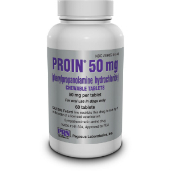It can be an unpleasant situation if your cat or dog loses control over her bladder. Urinary incontinence is not uncommon in pets, especially in old age. The condition shouldn't be confused with a pet not being housebroken, spraying during sexual arousal, and other emotional or behavior-related inappropriate urination. Incontinence in cats and dogs is a medical condition with a wide variety of causes.
Accompanying Signs and Symptoms of Incontinence
The primary symptom of incontinence in cats and dogs is the inability to control the bladder well enough to void it only in the appropriate place or at an appropriate time. However, depending on the underlying cause, you may observe other signs and symptoms, too. Some include small amounts of urine leaking out, dampness around the lower abdomen or on the hind legs, wetness on bedding or areas where your pet lies down, inflammation near the genitals, and urinary tract infections. Any indication your pet is suffering from urinary incontinence is a reason for a veterinary appointment.
"Urinary incontinence is not uncommon in pets, especially in old age."
Causes of Urinary Incontinence
The possible causes of incontinence in cats and dogs are many and varied. Often, old age itself is the cause, as animals gradually lose control over their bladder as their body ages. Obesity can also lead to development of urinary incontinence. Urinary tract infections, diseases, and stones are other common causes.

Occasionally, a pet temporarily develops the condition after neutering. Congenital incontinence may result from an ectopic ureter that is not correctly attached to the bladder or from another deformity. Brain and spinal lesions or injuries also sometimes trigger incontinence, as can the presence of a mass that puts pressure on the bladder, overactive bladder syndrome, chronic inflammatory disease, and other health conditions.
Treating Urinary Incontinence in Cats and Dogs
The course of treatment for your pet’s incontinence depends entirely on its underlying cause. If your cat or dog’s lack of bladder control is simply a byproduct of aging, your veterinarian may recommend a prescription medication like Proin or a supplement like Bladder Strength that provides nutritional support to help alleviate the condition. Obesity-related incontinence is managed with weight loss. Your pet must reduce her caloric intake and increase her physical activity.
Antibiotics are usually prescribed for urinary tract infections. If your pet has kidney or urinary tract stones, they are dissolved or removed surgically. How they are dissolved depends in part on their mineral makeup. Dietary changes are usually necessary, and a product such as potassium citrate or K-CIT-V may be employed to promote dissolution. Urinary incontinence resulting from other health conditions requires an appropriate course of therapy for the condition. Related skin inflammation and irritation are easily managed with topical ointments or anti-inflammatory agents.
Sources
http://www.petmd.com/dog/conditions/urinary/c_multi_incontinence_urinary?page=show
http://pets.webmd.com/cats/cat-urinary-incontinence
The above is provided for information purposes only and should not be used for the diagnosis or treatment of any condition.
This information does not cover all possible variables, conditions, reactions, or risks relating to any topic, medication, or product and should not
be considered complete. Certain products or medications may have risks and you should always consult your local veterinarian concerning the treatment of
your pet. Any trademarks are the property of their respective owners.